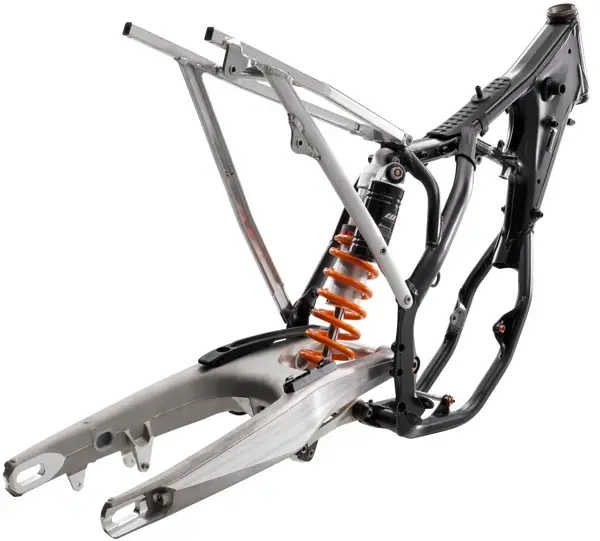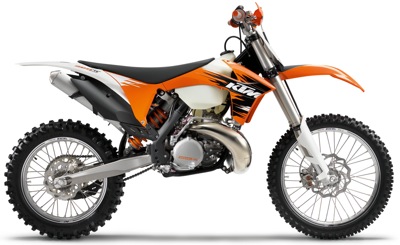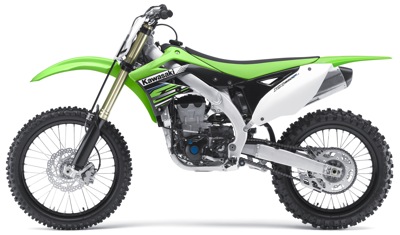MXA WRENCH TECH: WHAT THE 2012 MOTOCROSS BIKES REALLY WEIGH

It is strange how the motocross manufacturers ride a wave of public interest and then, as time passes, they forget about that marketing plan and move on to the next big thing.
NEED EXAMPLES?
(1) Suspension travel. There was a time in American motocross when The most important number on a spec sheet was how much travel a bike had. Manufacturers boasted that they had 10 inches of travel, then 11 inches, then 12 inches and finally they worked their way close to 13 inches. Today, no one cares how much suspension travel a bike has.
(2) Centralization of mass. The centralization of mass concept was started by a engineer named Peter Dill, who built Honda a concept bike with the majority of the weight centered in the chassis back in the ’80s. Honda didn’t move on Dill’s idea, but two decades later the idea of putting not only the weight, but also the rotating mass of the cams, valves and piston close to the center of gravity has taken on prime importance. The ultimate expression of this are the slant-engine Husaberg and the backwards-engine Yamaha YZ450F.
(3) Fuel injection. ATK fuel-injected their bikes as far back a 1990, but no one followed suit. And when they did (starting in 2008), the first generation of fuel-injected bikes made less horsepower than their carbureted brethren. Almost every manufacturer has jumped on the EFI bandwagon. And each has had varying degrees of success in their first tries. Honda hurt both the CRF250’s and the CRF450’s mid-to-top power. Kawasaki made the KX250F feel like an electric bike. Suzuki struggled with mid-to-top and over-rev. Today, some of the fuel injected bikes are finally surpassing the best of the carbed machines…most notably the KX250F and KX450F.
(4) Weight. Today’s modern motocross bikes are porkers. Only a few years ago, after a lightweight movement that spawned a couple under-200 pound 125 two-strokes, a 212-pound KTM 250SX and several 217-pound 250F four-strokes, the weight pendulum has swung in the opposite direction. The current crop of motocross bikes are gaining weight…lots of weight.
HOW DID THIS COME TO PASS?
There was a time, when the promise of aluminum frames, die-cast engines, spool-style hubs and reduced oil capacity made us believe that we were on a verge of lighter and lighter race bikes. Sadly, the opposite is true.

Aluminum frames were lighter than old-school steel frames, but now they are heavier than KTM’s chromoly steel frame. The engines were getting lighter?until the advent of fuel injection require thicker gas tanks, bulbous fuel pumps, heavier magnetos and more electronics. Even KTM, the last bastion of lightweight machines, went whole hog (adding five pounds of linkage, five pounds of fuel-injection and five pounds of electric starting gear to their previously svelte machines).
The MXA wrecking crew wanted to end the mystery of what the 2012 bikes really weigh?by taking each bike into our hermetically sealed weighing chamber for the ultimate test. We used the tried-and-true AMA Pro racing method of weighing the bikes with full running gear, but the gas tanks empty. Here is what the 2012 bikes, that MXA weighed, tipped the scale at?in order of pork.
2012 MOTOCROSS BIKE WEIGHT CHART

Yamaha YZ125………199
KTM 125SX…………..202
TM MX144……………204

KTM 150SX…………..204
KTM 250SX…………..217

Yamaha YZ250F……….218
Yamaha YZ250…………218
Honda CRF250…………222

Kawasaki KX250F………224
Suzuki RM-Z250………..224

HUSQVARNA TC250…229
KTM 300XC………………230
KTM 250SXF……………..231

Honda CRF450………..231
Yamaha YZ450F………238

Kawasaki KX450………242
KTM 450SXF……………243
Suzuki RM-Z450………244




Comments are closed.